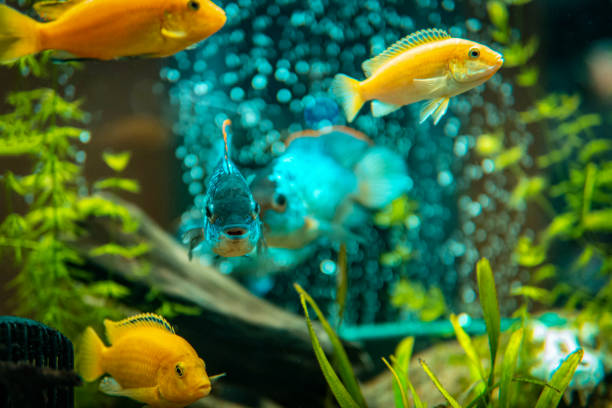Cichlids and stingrays can perform simple addition and subtraction in the number range of one to five, according to new research. It is not known what the animals need their mathematical abilities for.
The following written content by University of Bonn
Cichlids and stingrays can perform simple addition and subtraction in the number range of one to five. This has been shown in a recent study by the University of Bonn, which has now been published in the journal Scientific Reports. It is not known what the animals need their mathematical abilities for.

Suppose there are some coins on the table in front of you. If the number is small, you can tell right away exactly how many there are. You don’t even have to count them — a single glance is enough. Cichlids and stingrays are astonishingly similar to us in this respect: they can detect small quantities precisely — and presumably without counting. For example, they can be trained to reliably distinguish quantities of three from quantities of four.
This fact has been known for some time. However, the research group led by Prof. Dr. Vera Schluessel from the Institute of Zoology at the University of Bonn has now shown that both species can even calculate. “We trained the animals to perform simple additions and subtractions,” Schluessel explains. “In doing so, they had to increase or decrease an initial value by one.”
Blue means “add one,” yellow means “subtract one”
But how do you ask a cichlid for the result of “2+1” or “5-1”? The researchers used a method that other research groups had already successfully used to test the mathematical abilities of bees: They showed the fish a collection of geometric shapes — for example, four squares. If these objects were colored blue, this meant “add one” for the following discrimination. Yellow, on the other hand, meant “subtract one.”
After showing the original stimulus (e.g. four squares), the animals were shown two new pictures — one with five and one with three squares. If they swam to the correct picture (i.e. to the five squares in the “blue” arithmetic task), they were rewarded with food. If they gave the wrong answer, they went away empty-handed. Over time, they learned to associate the blue color with an increase of one in the amount shown at the beginning, and the yellow number with a decrease.
But can the fish apply this knowledge to new tasks? Had they actually internalized the mathematical rule behind the colors? Read more from Science Daily.





